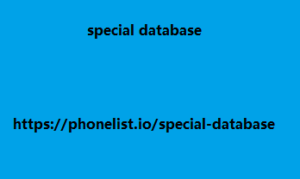The next article will come from a senior data scientist with an interesting and innovative way of thinking. Let’s dive into his thoughts, through his article below.
During my time as a data technician, I was educated in two schools of thought :
The first school treats data as raw material : data engineers prepare the data and business users process it for subsequent users such as clients.
The second school treats data as a decision-making material . The first school positions the data collector as a neutral party, if the data needs to be adjusted according to user needs.
The second school What Is Data-Driven? To Data Scientist Anxiety
Which school is ideal?
Having an audit process like the first school is ideal because there are two teams with two mindsets that can adjust to the needs before getting to the decision maker.
This is very helpful because cognitive biases are filtered. Twice, data workers because they directly understand how data is generated have. Certain biases towards the presentation of data and are therefore sometimes. Less sensitive to how others will react to the data.
The data team will have a contextual
Understanding of the data displayed and sometimes forget. That there is a background that has been forgotten to be told. The presence of a second team – for example the marketing team – helps direct. The key message that wants to be conveyed in a more. Focused way and in accordance with what the final decision maker needs.
It’s a kind of Front-end versus Back-end pattern that will work well if both parties understand each other’s sector knowledge.
However, if one of the parties does not understand. The decision maker’s wishes, it will be very difficult to reach an agreement on. The data to be presented or even the requested data is “unseen”.
Therefore, the second school creates difficulties. Especially for decision makers who do not really understand how. To communicate what is desired – more often than not.
The result is an unproductive feedback loop that sometimes spills over into the colors of the graphs used.
Using and leveraging information is more important than ever in a world when data is everywhere. Let us introduce you to special database businesses—those one-of-a-kind companies that distribute, manage, and curate data specifically meant for special database particular industries or markets. What, though, makes these companies so essential.
This is different from decision makers
who already have a concept and key message they want to convey, the data technician here acts as a consultant for decision makers. Helping determine what data is needed and how to present it.
The most dangerous in this school of thought is the “yes man” data man, data that follows the wishes and imagination of the decision maker will produce equally imaginative decisions.
Conclusion
Not only for tech companies, but if we aim to empower data as a determinant of company development, there must be awareness of data literacy from top to bottom, data-driven is an ecosystem, not just a linear process .
Having a data team without decision makers
Who are not willing to learn how to empower data is not enough.
Having a data team that cannot educate other operational teams to use their data well actually hinders the data-driven decision-making process.
Data-driven means being willing to eliminate the HIPPO ( Highest Paid Person Opinion ) culture or in local wisdom ABS (Asal Bapak/Madam Senang).
AUTHOR PROFILE
Andaru Pramudito Suhud is an alumni health tourism for eye treatment of the University of Indonesia with more than 6 years of work experience, in the field of Data-Scientist. Currently, Andaru is a Data Consultant and solves problems for multinational companies in various countries.
He is a smart professional with broad and deep insights.
What does an editorial calendar look like?
There are several ways to organize an editorial calendar, depending on your publishing and management needs. You can use any editing program (such as Word or Excel), or you can install the WordPress plugin , if your blog is based on a WordPress platform, or you can use Google Calendar , which is my favorite tool.
How do you actually build an editorial calendar? Usually, on the horizontal line of the sheet you insert the days of the week and the date and on the vertical line the topics you will address in the blog. In each box you can insert the title of the post, the blogger to whom you have assigned the article (in the case of a multi-author blog) and all the information canada email lead you need (keywords to focus on, tags to insert, the title and so on).
Your blog’s editorial plan must be essential to be functional
I then assign a specific color to each post depending on my programming needs. For example, you can choose the colors based on the type of post you have to write: you can paint all the posts dedicated to SEO red, the tutorial posts green, the posts containing an infographic pink and so on.
The criteria with which you choose
the colors will depend on your needs and your goals. As for the other information (analysis and selection of keywords to use, tags, analysis of search volumes), I create a separate Word document, dedicated to each blog and divided into individual posts.
Speaking of possible types of blog posts, I suggest you read the article Content Marketing: 14 Types of Blog Posts to Break the Monotony .
Google Editorial Calendar for Blogs
This is a simplified test calendar that I created just to show you how you can structure an editorial calendar for the blogs you manage. How to do it? It’s very simple, follow me! Set the Google calendar options to month and in each box, which indicates the publication date of the post, write the title of the article.

